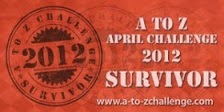 |
Jamison is a Traveller character from
the very first edition of the game |
Within
Traveller the roleplaying game,
there are a series of metagames and minigames. These can be lots of fun and
help scratch the
Traveller itch if, like me, you find it difficult to get a
regular crew together for a game. It’s not like I’m Nigel No-friends, it’s just
that organizing games can be a bit like herding cats these days, with kids and
families and work all competing for time.
The character generation process is
actually a little game all of its own. Unlike a number of other roleplaying
games from the mid-to-late 70’s period, characters in
Traveller begin their
adventuring later in life. In basic
Book 1 Character Generation, the
character’s pre-adventuring career is resolved in a series of four-year terms.
In the later career books, starting with
Book 4: Mercenary and
Book 5: High Guard, and in various third party career books, such as
SORAG from Paranoia Press, the four year term is broken down
further into one year assignments. What this all means is that at the end of
the character generating process, it is possible to marry up a character’s career against the larger history of the campaign and see whether he or she was present at significant historical events.
 |
| Cool starship discovered on the Internet |
And while this is fantastic from a
character’s backstory point of view, it’s also actually quite a lot of fun just
rolling the dice and seeing where your characters end up. I have a notebook of
characters from various career paths that I have generated in gaming downtime
to use as NPCs as required.
Traveller wouldn’t be
Traveller without
starships and one of the things
Traveller has always been known for is its
material design systems – a toolbox of components and rules that allows you to
create and define “stuff” like planets, planetary systems, and starships.
 |
| High Guard Shipyard |
I used to use the starship design sequence
and design ships on notepaper – listing the
components I wanted and their volumes and costs, adding it all up and then
pulling things out or downgrading them until the volume of the components matched the volume of the starship hull – but this was all a bit fiddly and
time consuming.
A few years ago, I discovered that a very clever countryman of
mine had created a lovely little computer programme that did all the heavy
figuring for you. As freeware, the programme,
High Guard Shipyard, is available
for download from Andrew Vallence’s
website . Essentially, he put all the volume and cost parameters into a spreadsheet and
then linked this data to a little interface screen containing all the required formulas.
 |
Text report showing volume and cost of
components for a ship design. |
So now, I can enter in the performance details I want my ship to possess, and
the programme will make all the required calculations. And this means that if I
change a parameter, all the other calculations are updated as I go. It will
also provide me with a printable data card of the final ship, as well as a text
file that elaborates on the actual components chosen. It actually took me
longer to make up these screen shots than it did for me to make the ship!
The design sequence for generating
planetary systems uses a lot of variables – everything from planetary diameter
to atmosphere type to population to government. These are hard to figure into a
spread sheet without some form of random number generator. Fortunately, there’s
another bit of freeware called
Heaven and Earth, specifically designed for
Traveller, available on the Internet.
 |
| Heaven and Earth |
This piece of software will generate
subsectors and sectors, using several different design systems, as well as
fleshing out entire star systems and mapping them. It also has a fairly useful
edit function that allows you to enter existing worlds into your master sector
map. So, all in all, a pretty powerful piece of software with a few annoying
quirks – such as not allowing you to name a system’s primary star separately
from the main world.
Sometimes, you just need an estimate of how
much money your polities have to spend – especially if you’re looking at Sector
and Subsector Fleet budgets, and trying to work out the size of available
ground forces. To calculate how much money the armed forces have, you really
need to know what the Gross Planetary Product of each system is and work out
how keen the system government is at slicing off a chunk for the military. As
economics bores most people rigid, the Traveller designers came up with a quick
little calculation that produces a number. What’s neat about this is that by
plugging the Universal Planetary Profile (UPP) values (generated when each
planetary system is created) into a simple Excel spreadsheet, you can generate
system, subsector, and Sector military budgets, as well as shipyard capacity
values for all A and B Class Starports.
Supplements such as Sector Fleet (for MongooseTraveller) and Ground Forces (for GURPs: Traveller) offer suggestions for how
these armed forces might be structured which allows the Games Master to slice
and dice his or her budgets as is deemed appropriate.
By automating a lot of the design calculations,
a Games Master can extract information more quickly from the raw data, and can
have more faith in the numbers being generated. By taking out the drudgery, the
fun factor is increased which, after all, is why we do this.













































.png)








